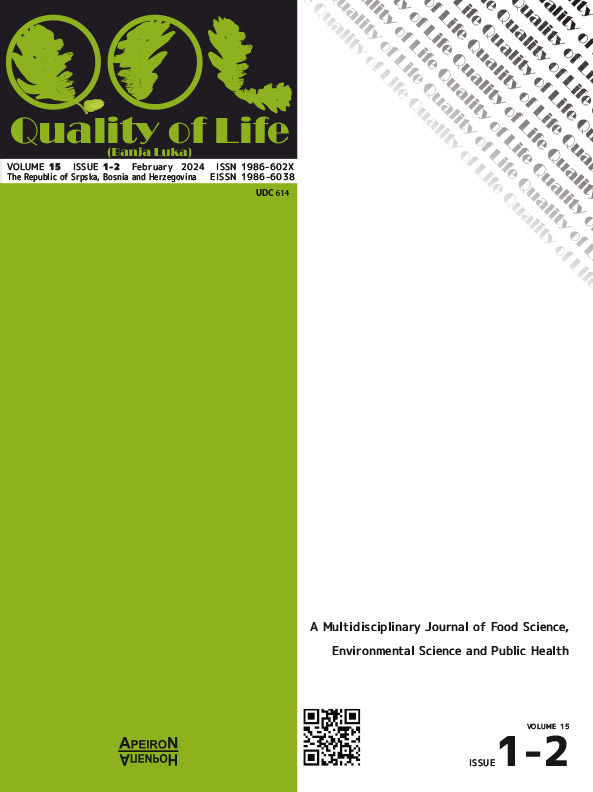Indoor Air Quality Monitoring in Akure, Ondo State, Nigeria
DOI:
https://doi.org/10.7251/QOL2401013AAbstract
Using the Canāree A1, a low-cost monitoring device made by Piera System, Canada, variations in Particle Count (PC) and Particulate Matter were observed in a building residence of five rooms in Akure, Nigeria (two living rooms, two bedrooms, and one kitchen) in both January and February 2022. The average PM2.5 and PM10 levels in all rooms were above the World Health Organization (WHO) guidelines for 2021, which were: PM2.5 - Annual (5 µg/m3), 24 h (15 µg/m3), and PM10 - Annual (15 µg/m3), 24 h (45 µg/m3). Rooms A (the first sitting room) and C (the kitchen) were found to have greater PC and PM values than the other rooms. Room A had the greatest PC1.0 level, however, PC5.0 was also discovered to be high. Based on the volume of activities, PM10, PM5.0, and PM2.5 were the main air pollutants in Akure. These results indicate considerable effects from both indoor and outdoor activity, two key sources. During the duration of the study, certain residents of the building frequently complained of having a cough, a running nose, and other ailments. These results indicate considerable impacts from both indoor as well as outdoor activities. During the duration of the study, certain residents of the residence often reported having a cough, a running nose, and other ailments.
